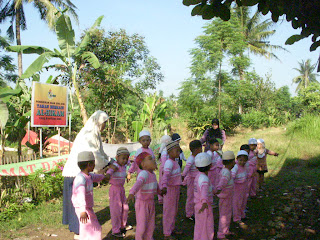This programme offers training in the key areas of Islamic economics, finance and Shariah in both theoretical and applied aspects. It provides candidates with a comprehensive understanding of the economic, financial and legal environment in which providers of Islamic financial services operate.
The MIF (Masters in Islamic Finance) is designed for academics and practitioners who wish to extend their knowledge as well as fast-track their career in Islamic finance. The programme provides a strong foundation in the principles and practice of Islamic finance. It also equips students with new skills, analytical tools and strategic perspectives from which they can make sound financial decisions.
the United States, a primary school is the same thing as an elementary school. It is for young students usually kindergarten to fifth or sixth grade. In the United States elementary school is a more common term. Primary school is often used in private or independent schools. (In private or independent schools the government does not give the schools money.)
In the United Kingdom, a primary school usually comprises a nursery and the first 7 years of a child's full-time education.
In India, "Primary Education" means the 'Nursery', the 'Kindergarten' and four years of regular schooling thereafter. Admission to Nursery classes is for children above two years so that the age is 6+ when entering Class I. Children are taught language (mother tongue and English) reading/writing skills, basic arithmetic and quite a good amount of general information about the country, people, statesmen, great people, flora & animals. However, this is true only for schools in the urban areas. Rural schools do not have Nursery or Kindergarten; they admit straight at Class I when the child is six. Further, the rural schools use the mother tongue as medium of instruction, not resorting to English in any way. Primary education is free in government schools. Moreover, rural primary schools offer free mid-day meals to children (the government pays for it) so that the drop out rate comes down. States of West Bengal, Maharashtra, Manipur, Nagaland and Kerala have done very good work in this way of spreading primary education.
In Singapore, Primary School refers to those students who are normally between the ages of 7 to 12. Primary School is classified as P1 to P6 for Primary 1 to Primary 6 respectively. At the end of P6, students sit for a national level Primary School Leaving Exam (PSLE) which is used for placement into Secondary School. Prior to Primary School, pupils attend Kindergarten School for 2 years.
MIF can be studied on campus full-time or part-time. For both full-time and part-time students, classes are held after office hours from Monday to Friday and during the day on Saturday. The number of students accepted each semester is limited.
The MIF (Masters in Islamic Finance) is designed for academics and practitioners who wish to extend their knowledge as well as fast-track their career in Islamic finance. The programme provides a strong foundation in the principles and practice of Islamic finance. It also equips students with new skills, analytical tools and strategic perspectives from which they can make sound financial decisions.
the United States, a primary school is the same thing as an elementary school. It is for young students usually kindergarten to fifth or sixth grade. In the United States elementary school is a more common term. Primary school is often used in private or independent schools. (In private or independent schools the government does not give the schools money.)
In the United Kingdom, a primary school usually comprises a nursery and the first 7 years of a child's full-time education.
In India, "Primary Education" means the 'Nursery', the 'Kindergarten' and four years of regular schooling thereafter. Admission to Nursery classes is for children above two years so that the age is 6+ when entering Class I. Children are taught language (mother tongue and English) reading/writing skills, basic arithmetic and quite a good amount of general information about the country, people, statesmen, great people, flora & animals. However, this is true only for schools in the urban areas. Rural schools do not have Nursery or Kindergarten; they admit straight at Class I when the child is six. Further, the rural schools use the mother tongue as medium of instruction, not resorting to English in any way. Primary education is free in government schools. Moreover, rural primary schools offer free mid-day meals to children (the government pays for it) so that the drop out rate comes down. States of West Bengal, Maharashtra, Manipur, Nagaland and Kerala have done very good work in this way of spreading primary education.
In Singapore, Primary School refers to those students who are normally between the ages of 7 to 12. Primary School is classified as P1 to P6 for Primary 1 to Primary 6 respectively. At the end of P6, students sit for a national level Primary School Leaving Exam (PSLE) which is used for placement into Secondary School. Prior to Primary School, pupils attend Kindergarten School for 2 years.
MIF can be studied on campus full-time or part-time. For both full-time and part-time students, classes are held after office hours from Monday to Friday and during the day on Saturday. The number of students accepted each semester is limited.










 9:13 PM
9:13 PM
 consulting education
consulting education




 Posted in:
Posted in: 



















